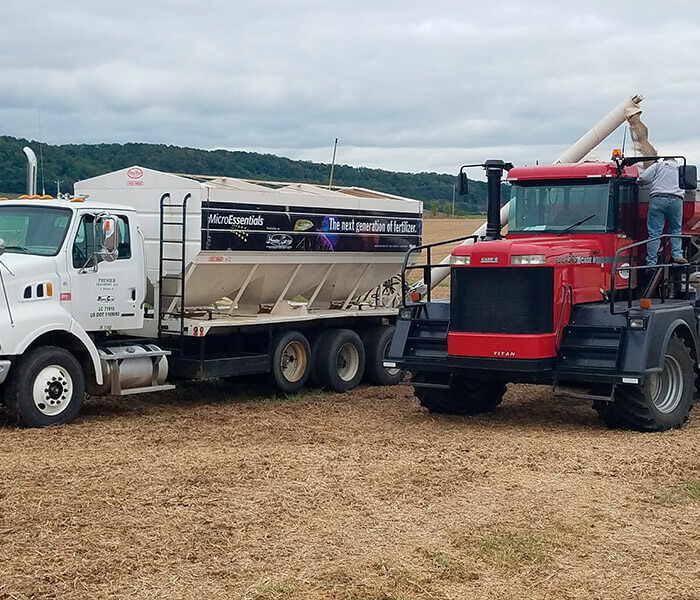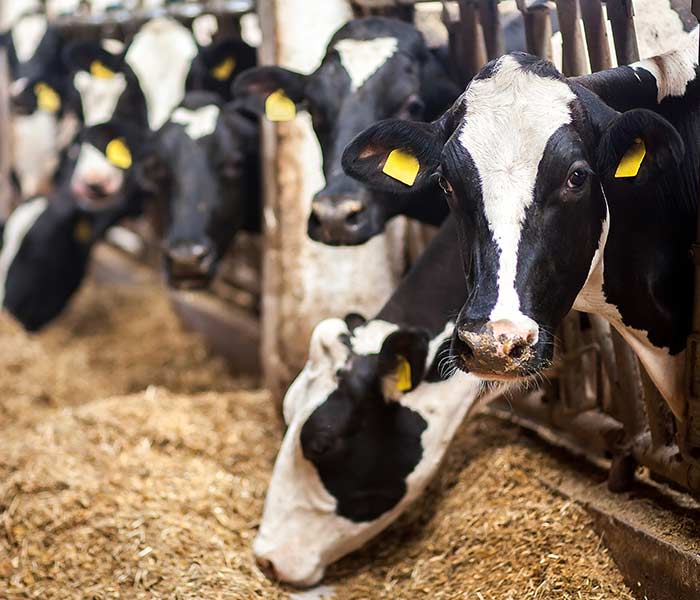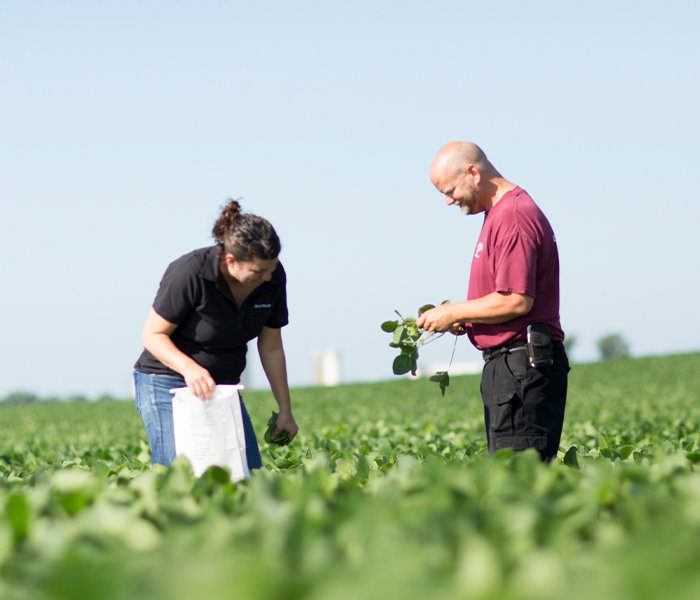Managing Market Volatility through Feeding
The last 2 years in the dairy business have brought out the most volatile times that any of us in the business of milking cows, processing milk, selling food, manufacturing feed or providing nutrition services have witnessed so far in our careers. I’ve spent 28 years as a nutrition consultant to farms and this past year witnessed some things for the first time, along with market instability getting more volatile with quicker peaks and valleys than ever before. I’d never dream it was sustainable for a year with most being over $25 cwt total pay price now. We saw $2 and some odd cent corn 2 years ago in August and pushing $8 corn now. $290/ton soybean meal in August to now over $500 a ton. I could go on and on with other ingredient disruptions, erratic prices and limited or no availability but I’ll stop there. I’d like to think that we won’t see this again but these times might be here to stay. How does your farm handle this volatility? I don’t think there is a magic answer in how we manage this. However, there are multiple tools available that we can use to help mitigate these variables.
Managing the expenses for a dairy business has always been a challenge and the new era of volatility magnifies the challenge of expenses. When we look at the income and expense categories of a dairy farm its easy to see the #1 income is milk and the #1 expense is overwhelmingly feed. As consultants, we are always talking about how do we you get more milk? It’s fairly well established the more production you get the higher your Income Over Feed Cost (IOFC) will be. Stating the obvious, it takes exceptional management to master that expense side of a dairy business. However there are also several key areas that I observe and work with every day that steal profits from your dairy business and most reside right inside the feed division on your dairy. These next number of things can reduce the expense side significantly on your farm. They are all simple and all of them should be discussions you can have with your Premier nutritionist regularly. It’s never to early to get started.
Feed Inventory
How much feed do you need to feed the herd for the whole year, including shrink? The most expensive feed to buy is the feed you don’t plan on buying and are forced to buy it versus planning to buy. It does not cost anything to plan. Do you have enough acres for forage? Grain? Are you planning your needs and being strategic in purchasing? The largest part of the diet and most basic need is forage. The most economical feed stuff to grow and feed is corn silage followed by haylage, but in my opinion corn silage is king. If you have winter kill in alfalfa the biggest bang for your buck is to replant with corn for corn silage if it fits your NRCS plan. In my unfortunate previous observations, Italian rye grass is a very poor yielding forage when interceded into alfalfa, and sorghum sudan is difficult to harvest and doesn’t yield as advertised. This year we are planting corn later, but still not too late, and alfalfa will sneak up quickly when it warms up. Don’t let the quality sneak by.
Contracting or Hedge Positions on Feed Ingredients
These tools can be as simple or as difficult as you want to make them. A simple physical contract through Premier has no upfront cash outlay and is by far the best way to level out the high prices. The hard part is watching the trends, and the best advice is to look for value. If you’re trying to hit the low, the only thing guaranteed is that you won’t hit it and probably will be left not getting anything covered. Talk with your Premier Nutritionist to see how easy it is.
TMR Software
There are a number of these on the market in varying levels of price and complexity. These are the best tools to help feeders feed cows. As well as the best tools to manage feed inventory, bunk management, feed shrink and dry matter corrections on farms.
Bunk Management
Are you over feeding and wasting feed? Underfeeding and causing herd health issues along with leaving milk on the table? Or are you subtly adjusting your feed amount daily based on the amount the cows are eating to maximize milk yield and minimize costly feed refusal? Ask yourself these questions and please talk through them with your Premier Nutritionist.
Feed Shrink
This is a monster of an invisible expense. Is your feed area tidy and cleaned up daily, unused feed put back and saved for the next feeding? Without TMR software there is no tool to measure if you’re over or underfeeding ingredients. With corn at $8, I get asked all the time now about corn alternatives. There are plenty of options but with milk being worth $0.26 cents per lbs and corn being $0.14 cents per pound, I’d be careful about critiquing corn too much. Financial guys always say “cash is king” and my opinion is “milk makes the cash”. It’s better to focus on keeping everything cleaned up, and on accuracy, correct feed weights, and proper refusal.
Dry Matter Corrections
This is the most basic practice to mitigate variation when feeding and if you don’t have a process to check it on the farm it’s easy to implement. If you aren’t checking consistently on the farm there is a lot of room for improvement and considerable savings.
Does the feed division on your dairy practice these simple procedures? Or Utilize the TMR software available to its fullest capability? It’s never to late to start. We are always quick to make diet or ration changes and I’m as guilty as anyone to want to change diets to save some feed costs. All too often we have numerous savings sitting under our noses by the way we manage feeding on the dairy and just don’t spend enough time to evaluate them. Take time to consider some of these tools and have the discussion with your Premier Nutrition Consultant and start to monitor some of those areas that may be stealing revenue from your business.
Brian Reilly
Feed Sales Manager



